On October 25th, the FPGA miner AGPF SK1 released a new edition of firmware for the miner. Mining workers with this wireless silent miner can update the system now.
New User Interface
Different from the previous firmware based on openwrt (refer to: Evaluation on Programmable Wireless Silent FPGA Miner AGPF SK1), the new firmware we have obtained is modified based on the official version of Raspberry Pi firmware and the size is about 650M after being zipped and 2G after being unzipped. A large amount of free space is available for DIY players after the a 16g TF card is used for writing.
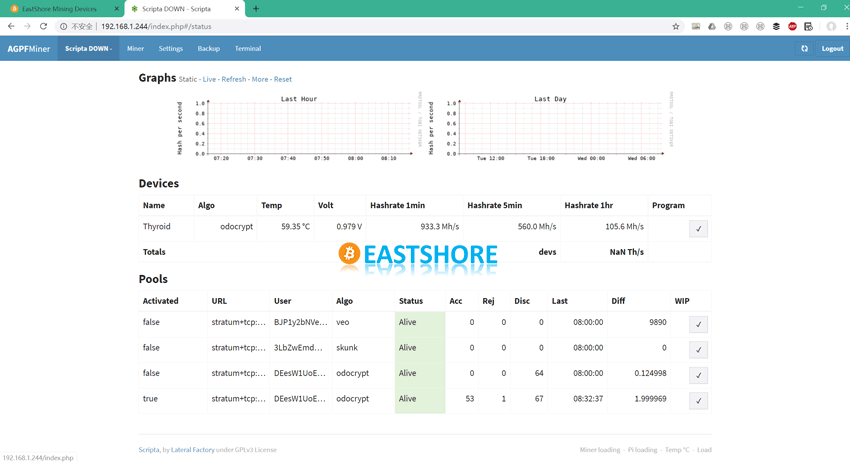
It is reported that the new UI is based on the open-sourced version of Scripta and the modified version of Baikal miner with clear function layouts in the user interface. Compared with the original openwrt system, the new UI supports the voltage, temperature and hashrate curve of the FPGA core. Meanwhile, the web page integrates the SSH function, so that the bit upgrading of subsequent algorithm can be realized by means of the command lines without the separate SSH client.
Odo Algorithm Supported with Hashrate of 400MH
Along with the new UI, another important update is that the odocrypt algorithm for DGB is supported now.
Compared with the similar 325t core on the market which can only provide less than 300MH of hashrate, the speed of Sk1 fluctuates between 380-410m with the odocrypt algorithm and the overall power consumption is about 85w. Driven by the AVC silent fan, the core temperature is controlled around 61℃. It’s reported that the odo algorithm has been launched now in some mainstream pools and users can also find other pools supporting the algorithm at DigiByte (DGB) Odocrypt | Mining Pools.
Upgrading and Miner Configuration
Users need to burn the TF (MicorSD) card through the card reader to update. Download the latest firmware here: apgf.img.gz
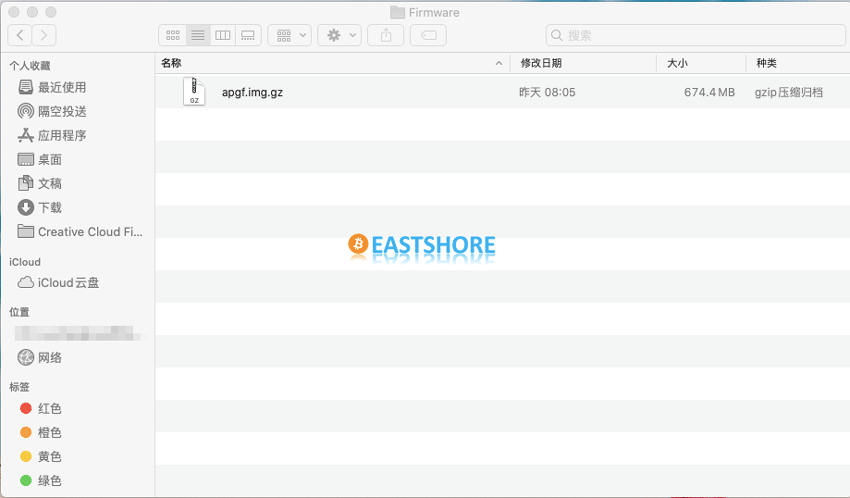
Please refer to the tutorial How to re-install the mining system images for a miner? to burn the latest version of miner image for upgrading. It’s recommended to prepare a new 8GB TF card(microSD card) instead of using the original TF card in the miner.
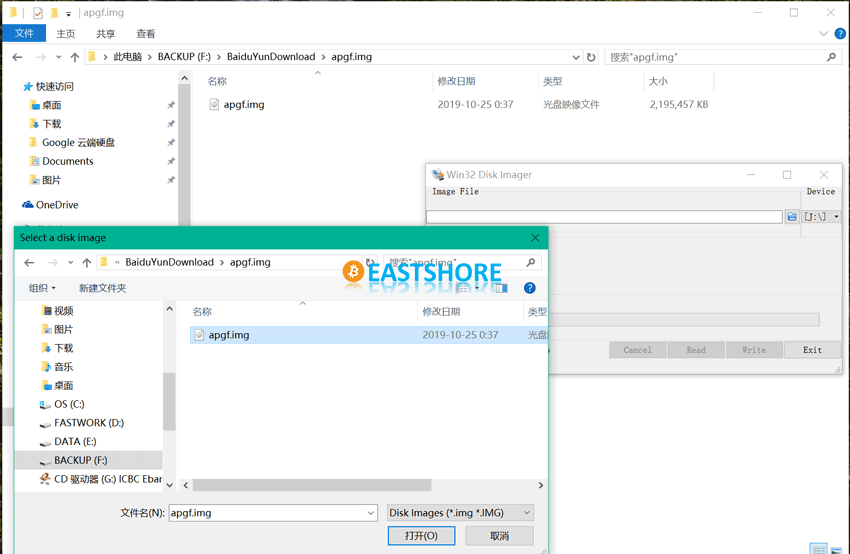
Insert the TF card burnt with the latest miner image into the SK1 miner, connect the network cable and power cord and power on.
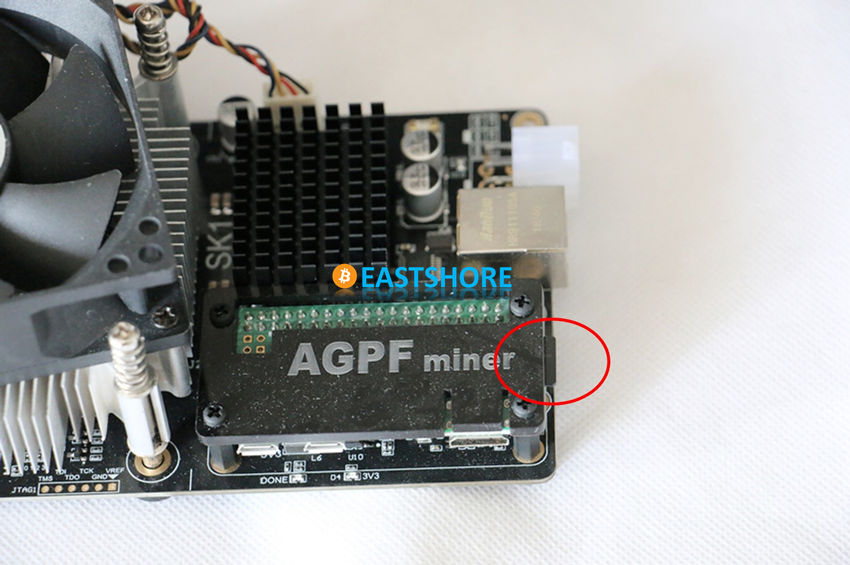
Wait for 1-3 minutes because the miner needs some time for initialization. Then scan the IP address of the miner. Please refer to the tutorial: How to find out the IP address of your crypto miner
Log in to the configuration page. Run your Internet browser, such as Google Chrome. Open the IP address you just scanned (For example, 192.168.1.126). On the login page, enter the password “agpf“.
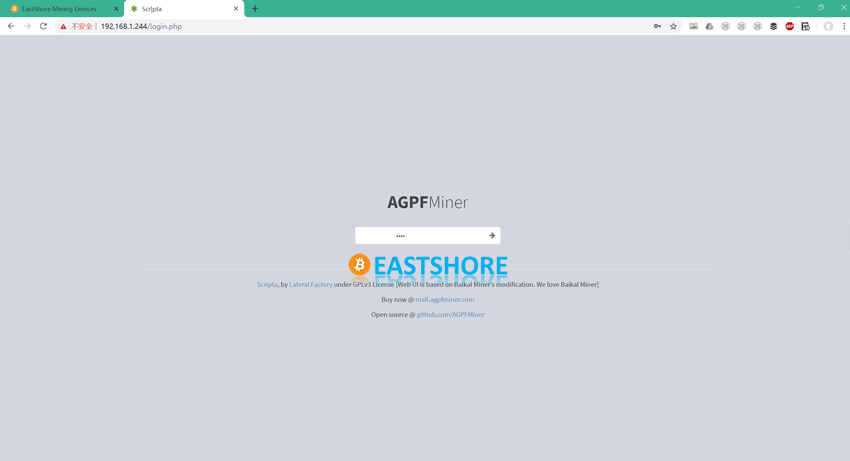
The configuration page of the miner is shown as follows.
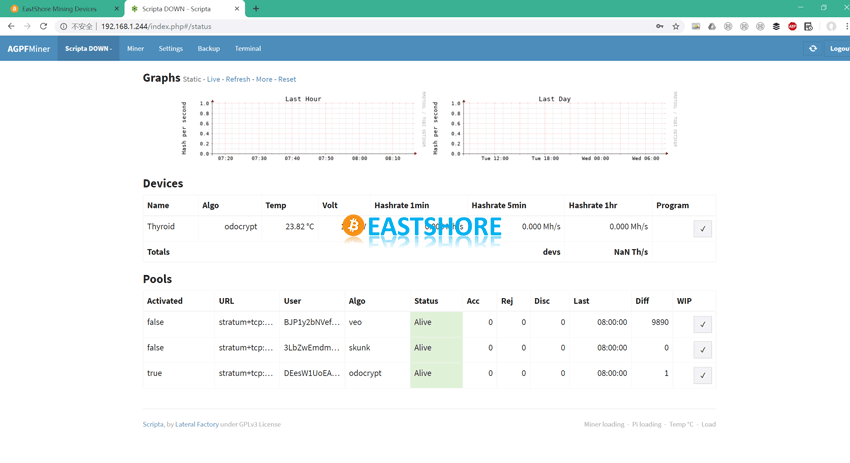
In the “Miner” tab, you can add, modify or delete mining information. Click “Add pool” to add new workers. Fill in the “URL“, “Algo“, “User” and other information. Moreover, you can delete a line of worker information by clicking the cross (x) at the end of the line.
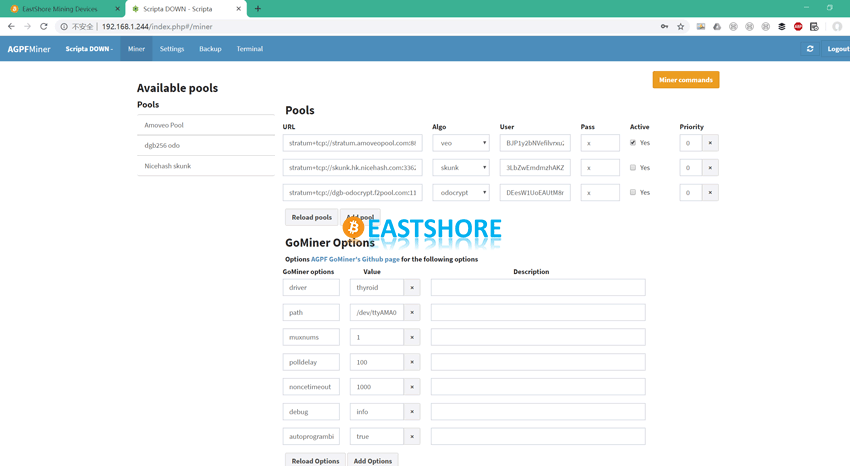
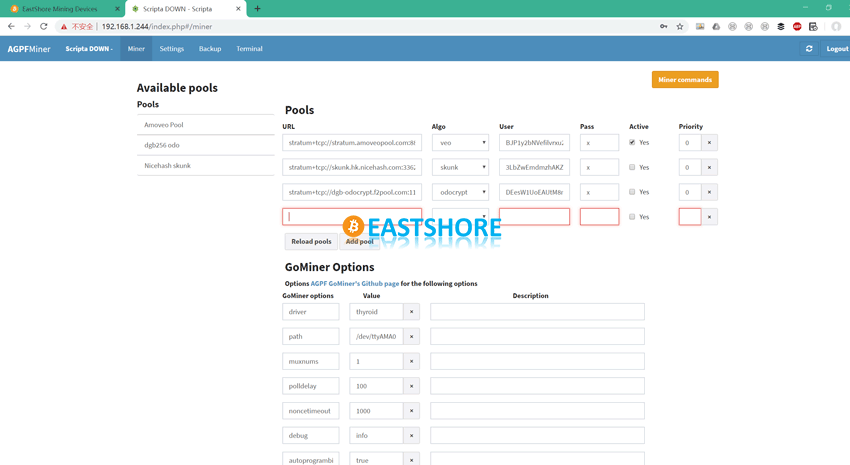
Once you have set up the required mining information, click on “Save pools” to save.
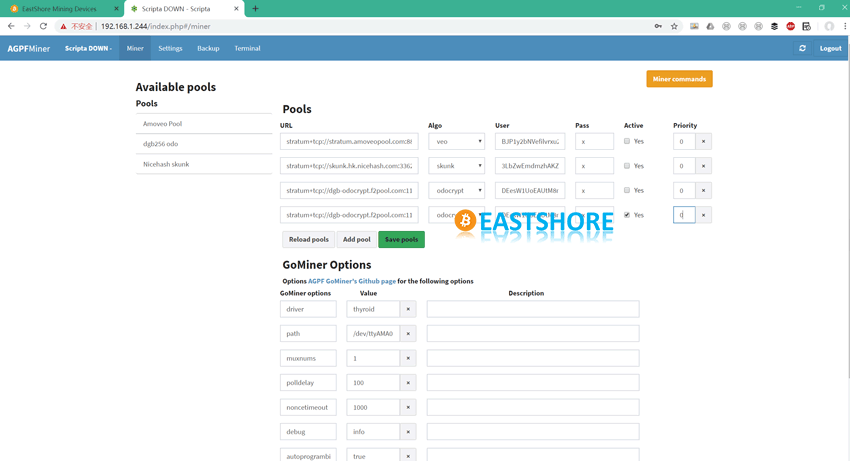
After setting the mining information, the miner will automatically start to mine with the set information about 5 minutes later. You can monitor the hash speed and other information on the homepage.
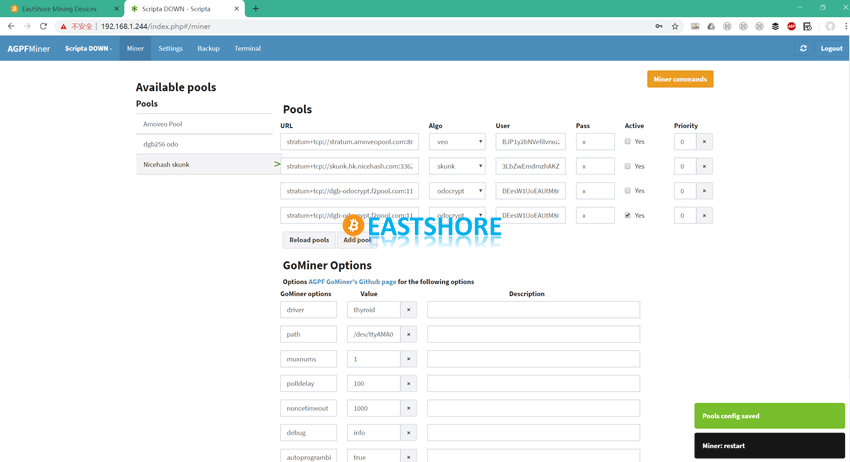

If your miner is running well, don’t arbitrarily change the options in the Settings, Terminal and other tabs.
Summary
In terms of the FPGA miner, some workers might have memory about the ngzhang who designed the first FPGA miner and might even still have the products that are still operational.
As the programmable chip, the FPGA miner can usually switch between different algorithms as the graphics card. Despite that the Bitcoin ASIC miners have become very popular since 2013, the FPGA miners haven’t gone obsolete.
Taking the well-known ztex 1.15y quad-core FPGA board as an example, it can run different algorithms including Scrypt, Keccak, x11, Lyra2z (many of which have been open-sourced). With its features of programmability and low power consumption, it has brought a lot of gains for many professional players.
At present, the FPGA programmable miners still have certain amount of users. The latest FPGA SK1 miner can mine with the odocrypt algorithm after firmware upgrading, which makes it more competitive. It is a great option for users who are looking for versatility, silence and portability.

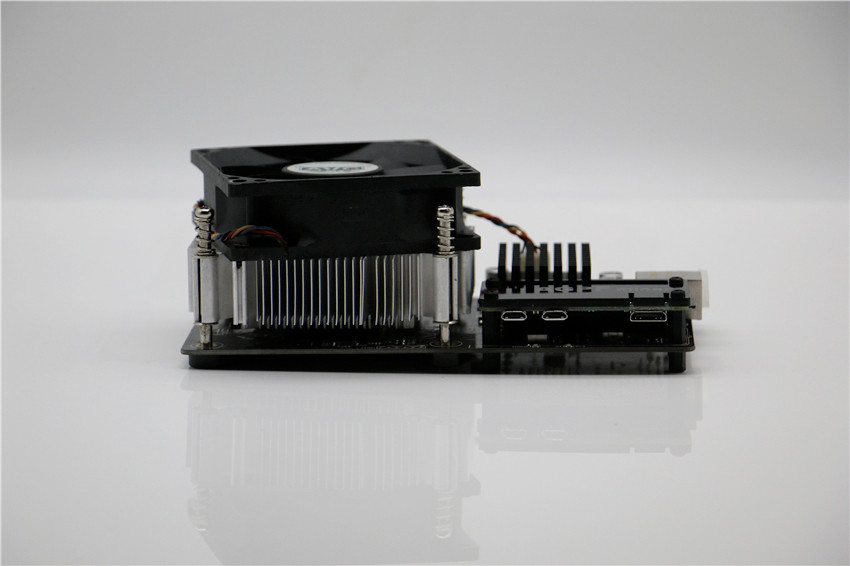
Pingback: Tutorial: FPGA Miner AGPF SK1 Multi-algorithm Supported | EastShore Mining Devices